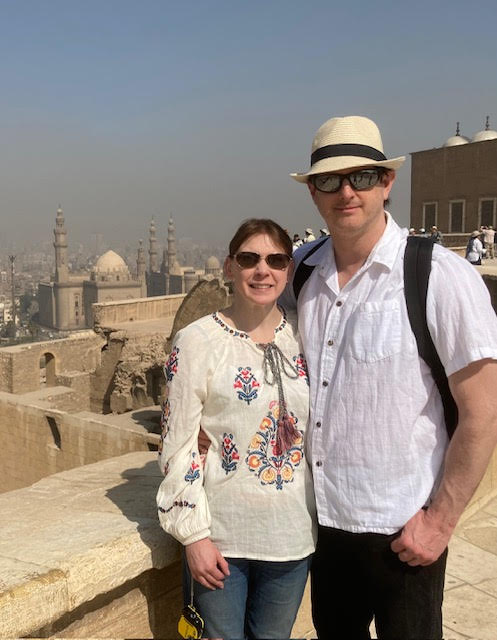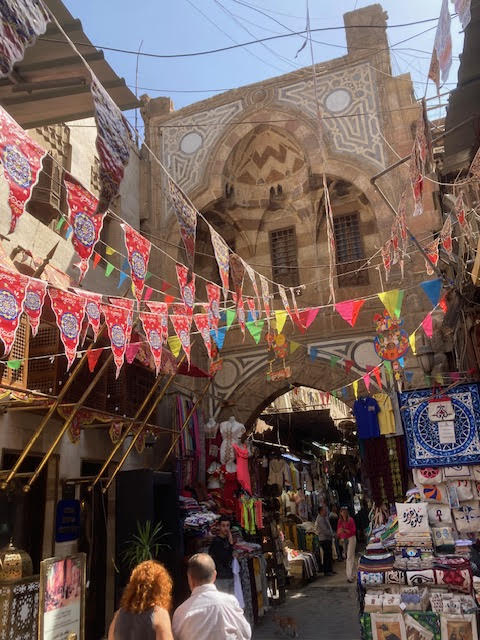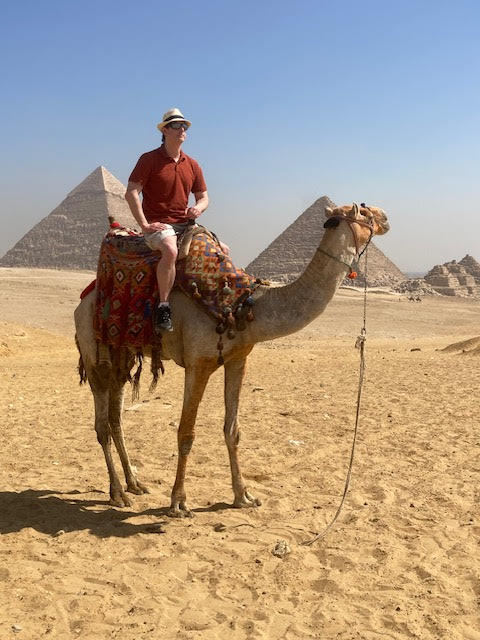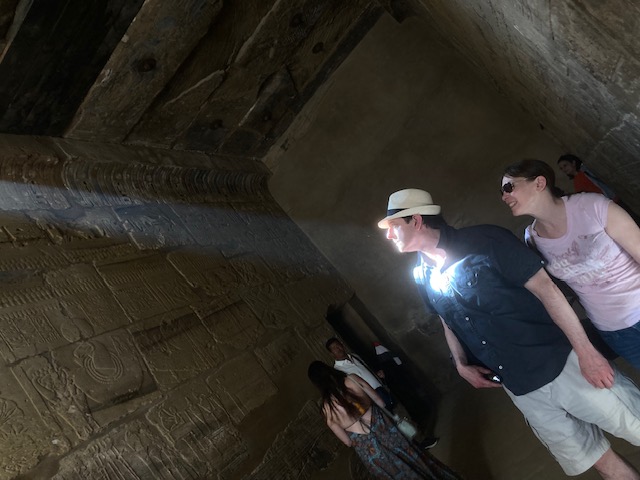“Cairo! City of the living!”
My first day in the current capital of Egypt has been joy incarnate. Egyptians are super-friendly, helpful, good-humored, and are possibly the best drivers on the planet–traffic rules in Cairo are little more than a meager suggestion, with cars and motorcycles and pedestrians mingling in a way that constantly seem on the brink of disaster–and yet we didn’t see one accident. That takes serious skill and a collectively cool temperament.
Our hotel is right on the Nile in Zamalek District. We spent time in the famous Khan El Khalili Bazaar, visited the Citadel of Salah Al-Din, and the mosque of Mohammed Ali.
One thing that’s clear is that Egypt is a country on the verge of significant transformation. Vast areas of desert are being reclaimed for dozens of new cities, solar power (thank Ra) is being adopted in force, and a new capital is about to be unveiled. And that’s to say nothing of the hundreds of new excavations taking place–a major tomb was just discovered last week. It also seems that the legendary Labyrinth (not the one on Crete, but the one described by Herodotus as being more impressive than the pyramids) has been located.
#
“Everything fears time. Time fears the pyramids.” — medieval Arab proverb
Once these were shellacked in white limestone and topped by gold, yet even in these stripped-down states they make your jaw drop. The Giza pyramids were built approximately 4,500 years ago (at least): put another way, these were as ancient to the Roman Empire as the Roman Empire is to us. They are also the only remaining Wonder of the World.
I can’t put into words the emotions these structures inspire. They’re precision-built manmade mountains which have outlasted entire civilizations… and will outlast our own. Look at the picture with people walking on the lower blocks to get a sense of the scale we’re talking about here, and understand that pictures hardly do it justice. Standing at the base, you crane your neck and watch them vanish into the sky.
Along with the pyramids, we rode camels, visited the Sphinx, saw the regular Egyptian Museum (to see Tutankhamen firsthand), and in a very special treat, even though the Grand Egyptian Museum isn’t fully open yet as of this writing, we had a professional Egyptologist take us on a private guided tour.
#
The Nile is a sapphire serpent, taking us four hundred miles south of Cairo to the glorious sites of Karnak and Luxor.
Karnak is the largest temple complex in the world. To approach it, you walk the Avenue of Sphinxes, and then you enter a breathtaking wonderland of obelisks, statues, and a forest of gigantic columns reaching 70 feet in height. The original dyes are still visible after more than 3,600 years. Hatshepsut’s obelisk is 97 feet tall and, astoundingly, is carved from a single block of granite.
This ancient place is a fusion of library, art gallery, and religious center. Both Luxor and Karnak were once part of the ancient city of Thebes.
#
Today we visited the West Bank for the Valley of the Kings, the Mortuary Temple of Queen Hatshepsut, and the Colossi of Memnon (a misnomer, as these were actually built for the mighty Amenhotep III, who presided over a sublime Golden Age in Egyptian history).
The Valley of the Kings is cut directly into the rock, and contains more than 60 tombs… with plenty yet to unearth. In a perfect world we’d be betting on which archaeology team would make the next major discovery, in the way that we obsess about football teams.
The Temple of Hatshepsut is a wonder to behold, even in its vandalized state. Hatshepsut’s reign was marked by stability and trade, though her legacy was nearly erased by her stepson after her death. The Colossi of Amenhotep III stand to honor one of Egypt’s greatest pharaohs who was a patron of the arts and builder of nationwide prosperity. Unfortunately, he was succeeded by a lunatic son whose religious fanaticism brought ruin and destruction to Egypt. Bad leaders bring down great civilizations, imagine that.
#
Going further down the Nile on the way to Aswan, we’re approaching more recent historical sites. After Alexander the Great dislodged the Persians from Egypt, the Greeks established a centuries-long reign here (ending with Cleopatra).
Alexander insisted that Egyptian customs and religion be respected, and today we see two examples of that: the temples at Edfu and Kom Ombo. The latter is of special significance in that it is dedicated to two gods: Horus, and Sobek the Crocodile God (and hundreds of crocodile mummies have been unearthed in this region). The hieroglyphs tell stories of deities, battles, and even a recipe for making perfume.
Every Egyptologist we spoke to emphasized the sheer amount of to-be-discovered tombs around here; ground-penetrating radar has shown extensive tunnels and chambers, just waiting to be exhumed. That doesn’t mean Stargates or alien megastructures, thank you very much.
And so our trip winds to a close. Egypt has always had a special place in my heart. From now on–like the timeless obelisks–it will live forever in my mind and soul, too.











